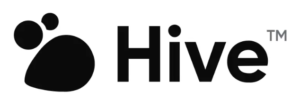4 promising new social networks for book marketing in 2023
Technological innovations are leading to new social networks for book marketing. Are any of them a good fit for you and your book?
The book marketing landscape has changed dramatically since my first book was published in 1995(!). Social media didn’t exist then, so publishers used publicity, advertising, direct mail, word of mouth, and bookstores to tell readers about books.
Today, social networks can be an important part of an author’s book marketing plan. Unlike the more traditional (and still valid) marketing options, social platforms provide an easy way to engage directly with readers.
And there are more and more of them.
Innovation generates more options
Not surprisingly, as technology evolves, innovators create new social networks authors can use for book marketing. Facebook, LinkedIn, Pinterest, Instagram, TikTok, and Twitter/X (despite a decline in users) remain the most popular.
But they have more competition than ever.
Some of the newest platforms are quite niche. Others, though, reach a more general audience and function as alternatives to platforms you’re already familiar with, especially Twitter/X.
Check out these new social networks for book marketing
Here are the four I’m hearing about the most that appear to offer potential for connecting and engaging with readers.
#1. Threads
 Because you use your Instagram profile to log in to Threads, the text-centric network launched this July by Meta (Facebook and Instagram) as a Twitter/X alternative gained users quickly.
Because you use your Instagram profile to log in to Threads, the text-centric network launched this July by Meta (Facebook and Instagram) as a Twitter/X alternative gained users quickly.
Simply download the app and use your Instagram login to begin creating your own “threads” – posts. You’ll see posts from people you follow on Instagram, too.
Like, comment, and share just as you do on other social networks.
While you can add images and videos to a thread, that’s really Instagram’s thing. Use Threads in a way that’s more like how you use Twitter/X. For most, that’s posting “here’s where I’m at right now” commentary.
Here’s Business Insider’s guide to getting started with Threads.
Who uses Threads? Most are already Instagram users, but this app skews male right now – 68% male to 32% female. It’s a young group, too. Just over one-third are ages 18-24.
#2. Mastodon
 People in my network are buzzing about Mastodon, an ad-free Twitter alternative.
People in my network are buzzing about Mastodon, an ad-free Twitter alternative.
Two features distinguish Mastodon from more established social networks:
- Content from people you follow appears in your network chronologically, as it happens. There are no algorithms deciding what you’ll see and when you’ll see it.
- You personalize your network by joining “servers.” These are fiefdoms within the larger platform created and managed by independent people who create their server’s rules.
Server options range from gaming to art to books to religion.
Here’s Wired’s guide to getting started on Mastodon.
Who uses Mastodon? This one is male-dominated, too. In addition, just under one-third of its users are ages 25 to 34 – a little older than Threads users.
#3. Hive Social
 Like Mastodon, Twitter alternative Hive Social uses a chronological feed. That means your posts aren’t hidden from followers, but it also means that if connections aren’t using the app when you post, they’ll need to seek you out to read your commentary.
Like Mastodon, Twitter alternative Hive Social uses a chronological feed. That means your posts aren’t hidden from followers, but it also means that if connections aren’t using the app when you post, they’ll need to seek you out to read your commentary.
Hive Social content includes text, images, Q&As, polls, and music. Infuse your profile with more personality without words by adding colors and songs.
It’s mobile only – there’s no desktop app.
Here’s Mashable’s guide to getting started on Hive Social.
Who uses Hive Social? I can’t find much information about this network’s demographics other than that users are mostly Gen Z – ages 11 to 26.
#4. Lemon8
![]() TikTok’s parent company introduced the U.S. and UK to Lemon8 in early 2023, so it’s quite new.
TikTok’s parent company introduced the U.S. and UK to Lemon8 in early 2023, so it’s quite new.
Like Pinterest, this is a lifestyle-focused, image- and video-sharing social network. Some describe it as a combination of TikTok, Pinterest, and Instagram.
Content created with the app’s templates and editing tools is saved and shared on Pinterest-style boards in categories that include:
- Fashion
- Beauty and makeup
- Food
- Wellness
- Home
- Travel
While you can post images without a caption, experts don’t recommend doing so. Because captions have two parts, a headline and body text, they’re more robust than those on similar platforms.
Here’s The Leap’s guide to getting started on Lemon8.
Who uses Lemon8? It’s popular with Gen Z – ages 11 to 26.
Should you start using any of these networks?
Before embracing any of these new options, answer these questions:
- Does the network reach your ideal readers?
- Do you have time to learn how to use a new social network effectively?
- Can you see yourself enjoying using any of them? If not, you’re less likely to become a regular user.
Will the social network be around in a few years?
In addition, consider whether any of these options has longevity.
Remember when people were asking if you’d like an invitation to join the audio-format network Clubhouse?
It was popular with the cool kids when first launched, but fizzled out. Clubhouse is still active, but it’s hardly mainstream.
The same thing could happen to any of these or the other new social networks.
Before using a new social network, understand if it will reach your audience, if you have time to use it, and if you'll enjoy it.Click to tweetBe realistic about what you can take on
I don’t have a lot of time for social media, so I’m very selective about which platforms I join.
What works for me won’t necessarily line up with your goals or personality. In the interest of helping, though, here’s my very personal take on these:
- Threads: I joined Threads because doing so was easy. I also wanted to see how it compares to other networks. I like how some Threads posts show up in my Instagram feed. That approach pulls me to the app, where I usually start scrolling.
- Mastodon: It requires too much thought for me. There are too many steps to join; each server has its own rules. I just can’t.
- Hive Social: The no-algorithm feed is appealing, but the demographic isn’t a good fit for me personally or professionally.
- Lemon8: I use Pinterest a lot already, so I’ll give this one a try to see how they compare.
In general, I try to stay open-minded, but realistic, about new tools and resources like these.
Can you promote your book without social media?
I know that many authors don’t like using social media.
I get it. It seems like there’s always something more to learn, doesn’t it?
And while I noted at the beginning of this article that social media can be important to your book marketing, you do have other options.
That’s why I collaborated with Jon Bard at Writing Blueprints to create a course for you, “Book Marketing Without Social Media: How to build a fan base and sell books without wasting countless hours on social media.”
In less than two hours, I teach you:
- Nine ways you can create awareness without using social media, including instructions and examples
- How to determine which of those tactics will help you reach your ideal readers
- Ways to select tactics that leverage your strengths, not your weaknesses
- Strategies for author extroverts and introverts
- The secret weapon book publicists use for their clients
- Which “no social media” tactics will take you the farthest the fastest
And the best part? Because you and I are connected, you get a $10 discount on the already low price. Learn more about Book Marketing Without Social Media here.
What’s your take on these four new social networks for book marketing? Do any of them appeal to you? Please tell us in a comment.
Like what you’re reading? Get it delivered to your inbox every week by subscribing to the free Build Book Buzz newsletter. You’ll also get my free “Top 5 Free Book Promotion Resources” cheat sheet immediately!


